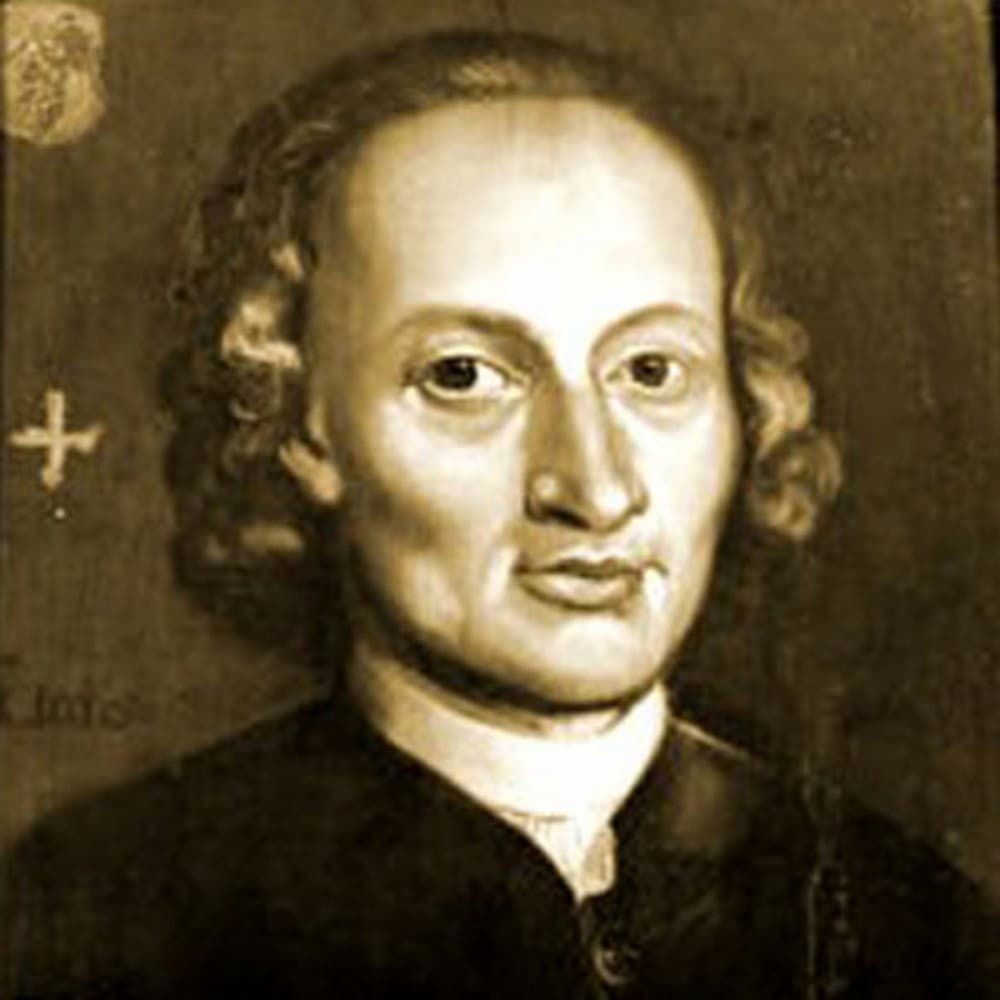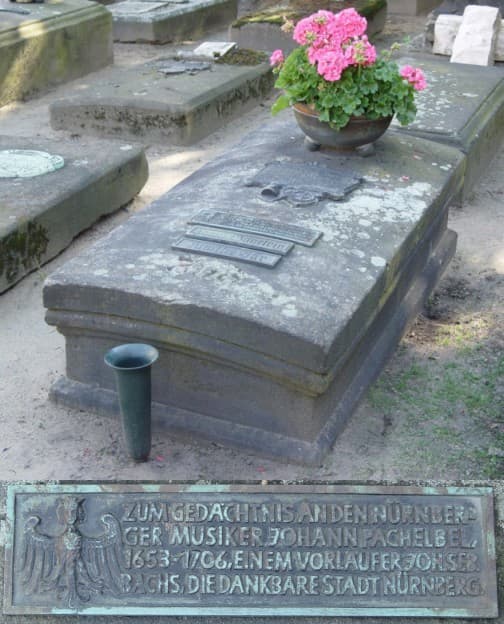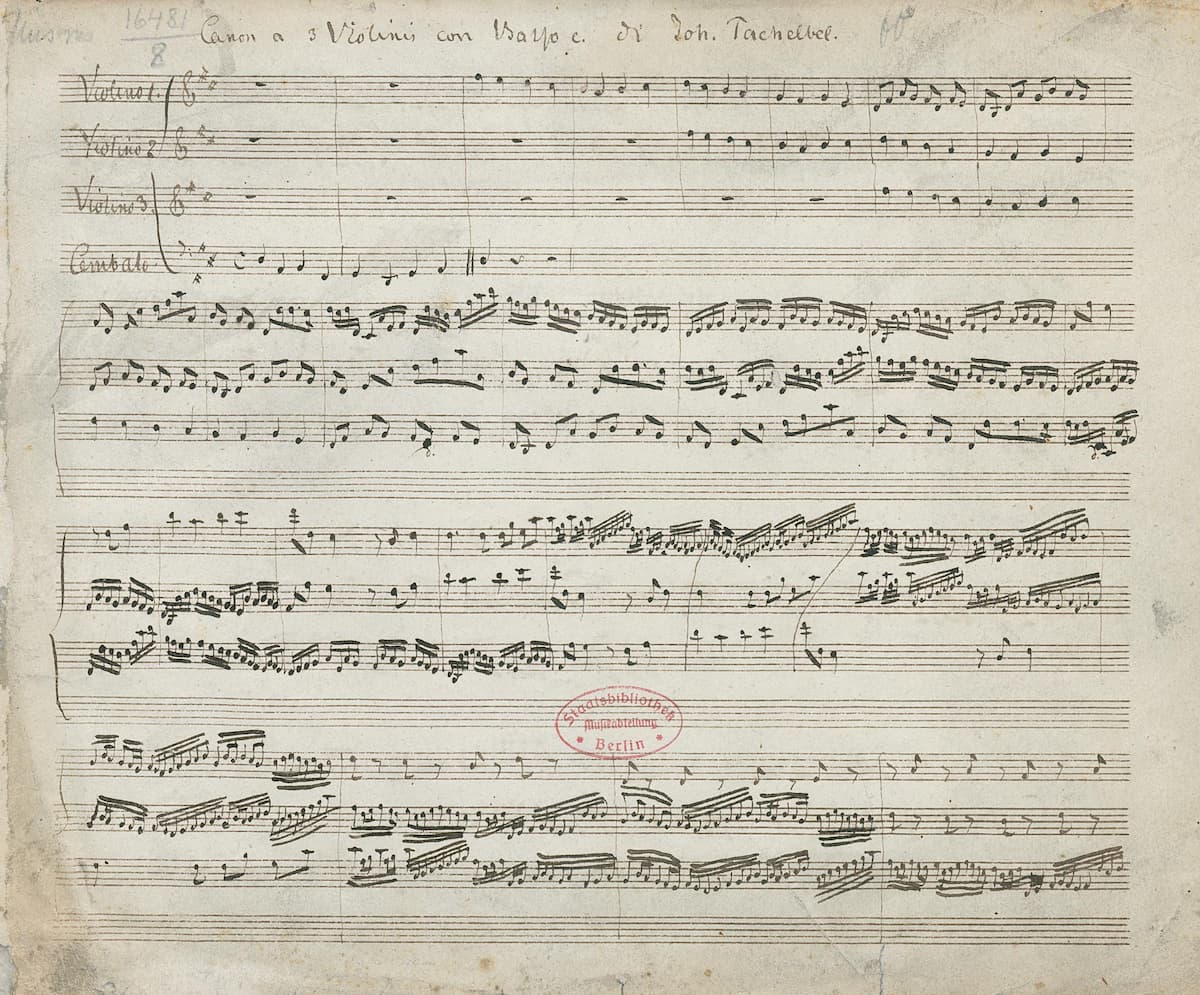Johann Pachelbel, famed composer of the even more famous canon, died in Nuremberg at the age of fifty-two on 9 March 1706. While his music enjoyed extraordinary popularity in Central Germany immediately after his death, 19th-century historians considered him a rather lackluster composer of organ and keyboard music. That reputation has recently undergone a fundamental reassessment, and Pachelbel is now considered “one of the leading progressive German composers of chamber and church music of his time.”
Johann Pachelbel: Canon in D major
Career Trajectory

Johann Pachelbel
A recent study has suggested that Johann Pachelbel (1653-1706) had a nearly perfect career. A diligent student in his native city of Nuremberg, he was sent for private study to a prestigious Latin school in Regensburg, where, because of his exceptional academic qualifications, he received special consideration. Pachelbel also spent an extended apprenticeship in Vienna, becoming deputy organist of the Stephansdom. He started his career alongside Johann Christoph Bach in Eisenach, and subsequently accepted a position in the most important Protestant church in Erfurt as a young man.
Pachelbel served for over a decade in Erfurt and was naturally close to the Bach family. Johann Sebastian’s father Ambrosius asked him to be godfather to his daughter Johanna Juditha, and to teach his son Johann Christoph Bach. After briefly working in the courts at Stuttgart and Gotha, Pachelbel returned to his native city and secured the most coveted organist position at St. Sebald Church. It is one of the oldest churches in the city and featured a long list of esteemed organists and composers. A scholar writes, “the significance of Pachelbel’s reputation and renown in his own day is reflected by this near-perfect career trajectory.”
Johann Pachelbel: Christ lag in Todesbanden (Johann Rosenmüller Ensemble; Arno Paduch, cond.)
Reputation

Organ at St. Sebaldus Church, Nuremberg
By 1695, Pachelbel had established a substantial reputation with the publication of three collections of keyboard music. His music was disseminated by an extensive circle of students, not only his instrumental works but also his vocal compositions. His contemporary, the composer and theorist Johann Gottfried Walther described them as “designed more perfectly than had previously been done.”
Contemporary accounts repeatedly emphasised the special qualities of his compositional style, aiming more at cantabile and clear part writing than at ostentatious virtuosity. According to recent research, “similarly classicistic tendencies such as those appearing at the same time in Arcangelo Corelli‘s music can be recognized in Pachelbel’s deliberate economy of means and emphasis on formal, harmonic, and compositional-technical clarity.”
Johann Pachelbel: Musicalische Ergotzung: Partita No. 2 in C Minor (Alarius Ensemble of Brussels)
Johann Pachelbel: Musicalische Ergotzung: Musicalische Ergotzung: Partita No. 5 in C Major (Alarius Ensemble of Brussels)
Manuscript Copies and Dictionaries

Tomb of Johann Pachelbel
With the exception of his keyboard music, almost all of his other works quickly fell into obscurity. However, even the circulation of Pachelbel’s keyboard music was a relatively regional affair. It spread by manuscript copies mainly through German-speaking areas, and it is “through coincidence and happy circumstance that these particular collections have survived until today.”
With manuscript copies of his keyboard music spreading throughout Germany, it is hardly surprising that Pachelbel’s name would be included in early dictionaries. The first mention appears in the 314-page dictionary by Johann Gabriel Doppelmayr. Doppelmayr was an astronomer, mathematician, and physician appointed to the Aegidien Gymnasium in Nuremberg in 1704. His Historische Nachricht, published in 1730, gives biographical accounts of over 360 mathematicians, instrument makers, and artists.
Johann Pachelbel: Deus in adjutorium (Capella Ducale; Fiata Musica; Roland Wilson, cond.)
Esteemed Teacher

Johann Pachelbel: Canon
The dictionary entry in Doppelmayr was repeated in subsequent reference works by Walther (1732), Mattheson (1740), and Gerber in 1790. As scholars explain, “all of these entries point to Pachelbel’s secure regional renown in his own time and the continued transmission of his keyboard music through these well-established networks.” But what is more, Pachelbel’s reputation as a teacher was widespread and his “teachings were passed on through several generations of church organists and music director.”
Pachelbel’s most significant students included Johann Christoph Bach, who passed on his knowledge to his younger brother Johann Sebastian. Pachelbel’s oldest son Wilhelm Hieronymus Pachelbel, perhaps his most accomplished student, instructed the lexicographer and theorist Johann Gottfried Walther.
Pachelbel’s youngest son Karl Theodor, also known as Charles Theodore transmitted his father’s influence to the emerging American colonies. Pachelbel’s son Johann Michael became an important instrument maker in Nuremberg and performed in Kingston, Jamaica, in 1728, and his daughter Amalia was respected for her paintings and etchings. She is also featured in Doppelmayr’s dictionary.
For more of the best in classical music, sign up for our E-Newsletter
